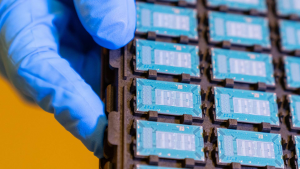Why Nokia Should Stick with Windows 8: Do One Thing, and Do it Well
![]() Nokia’s latest quarterly earnings report reveals some promising numbers for the Finnish smartphone maker and its continuous improvement with the Windows 8-powered Lumia sales worldwide, but it’s struggling in the U.S. In fact, North America was the only country that witnessed a decline in Nokia Lumia sales, while China seems hungry for Nokia’s high end device. Is Nokia channeling its marketing and research efforts in the right direction, or should the phone maker broaden its Lumia lineup to become more competitive in the highly saturated U.S. market?
Nokia’s latest quarterly earnings report reveals some promising numbers for the Finnish smartphone maker and its continuous improvement with the Windows 8-powered Lumia sales worldwide, but it’s struggling in the U.S. In fact, North America was the only country that witnessed a decline in Nokia Lumia sales, while China seems hungry for Nokia’s high end device. Is Nokia channeling its marketing and research efforts in the right direction, or should the phone maker broaden its Lumia lineup to become more competitive in the highly saturated U.S. market?
I think the right balance between marketing and R&D, something Nokia’s known for, could help the Lumia manufacturer sell more devices stateside.
“Looking at Nokia historically, they’ve always been pretty strong on the international stage,” I said during an appearance on this morning’s Live NewsDesk Show with Kristin Feledy. “So it’s not entirely surprising to see that they’ve done well overall, but it is a little bit disheartening to see that they are actually declining in the U.S. The U.S. smartphone market is highly competitive, though this is also the case in other countries like China. But the U.S. is a key market, very saturated with Apple devices and Android devices, and the competition is certainly high here. One factor that could come into play here is that balance between R&D and marketing. On the marketing side, we could see some improvements if Nokia expands their line and finds some additional partners as far as carriers go in the U.S.”
And those partnerships could come sooner rather than later. While Nokia’s been working closely with AT&T to push the Lumia line, recent leaks indicate the Finnish phone maker could be teaming with Verizon for a new device launch. Images recently leaked of a Lumia 928 for Verizon, begging the question, can a revamped handset help its sales in the U.S.?
Given Nokia’s experience and influence in R&D, a broadened lineup could also serve its partnership with Microsoft well. Nokia’s really pulled back from its own mobile OS, building around Windows Phone 8 for a second chance in the market. A whopping two-thirds of the 5.6 million Lumia devices sold in Q1 of this year were powered by Windows Phone 8, and Nokia’s growth indicates a hopeful recovery from the billions its lost in recent years.
It’s a partnership that could benefit Microsoft as well, which has seen dismal sales of its own hardware efforts. The Surface tablet line was Microsoft’s first foray into the mobile hardware sector, hoping to push its completely reworked mobile OS directly to consumers. But perhaps Nokia and Microsoft are the perfect vehicles for each others’ goals, and these tech giants should stick to their respective strengths.
A message from John Furrier, co-founder of SiliconANGLE:
Your vote of support is important to us and it helps us keep the content FREE.
One click below supports our mission to provide free, deep, and relevant content.
Join our community on YouTube
Join the community that includes more than 15,000 #CubeAlumni experts, including Amazon.com CEO Andy Jassy, Dell Technologies founder and CEO Michael Dell, Intel CEO Pat Gelsinger, and many more luminaries and experts.
THANK YOU



















